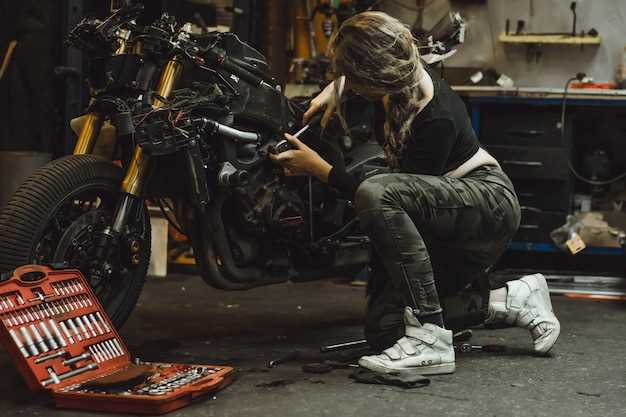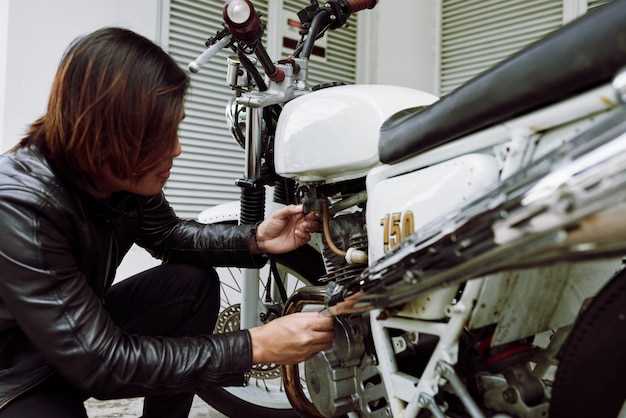

When it comes to maintaining or restoring a motorcycle, finding quality used parts can be a game-changer for both enthusiasts and everyday riders. The motorcycle industry is known for its high costs, and purchasing brand new components often leads to a substantial financial burden. By exploring the market for used parts, riders can achieve significant savings while still ensuring that their bikes run smoothly and efficiently.
However, navigating the world of used motorcycle parts requires careful consideration. Not all used components are created equal, and it’s essential to understand what to look for and where to find them. This guide will walk you through the essential steps of sourcing reliable used motorcycle parts, helping you to make informed decisions that benefit both your wallet and your ride.
From reputable salvage yards to online marketplaces, knowing where to search is just the beginning. Inspecting the condition of the parts, understanding their history, and verifying compatibility with your motorcycle model are crucial in securing a good deal. This comprehensive approach ensures that you not only save money but also invest in parts that will enhance the longevity and performance of your motorcycle.
Evaluating the Condition of Used Motorcycle Parts Before Purchase

When purchasing used motorcycle parts, assessing their condition is crucial to ensure functionality and safety. Start by inspecting the parts visually. Look for any signs of rust, corrosion, or cracks that may indicate wear and tear. Pay close attention to components such as frames, brakes, and wheels, as these are vital for the motorcycle’s safety and performance.
Next, inquire about the history of the parts. Ask the seller if they have been involved in any accidents or if they have undergone any significant modifications. Understanding the background can provide insight into the potential longevity of the parts. Additionally, request maintenance records or receipts if available, as these documents can verify proper care and handling.
When possible, test the parts before committing to a purchase. For example, if you’re buying used brake components, check their responsiveness by pressing them in place if applicable. Rotate wheels to assess smoothness and check for any unusual noises that might indicate internal damage.
It is also advisable to compare the used parts to new ones. This comparison can reveal discrepancies in quality, which might influence your decision. If the used parts are still functional but show signs of aging, consider their price in relation to new parts to ensure you’re making a wise investment.
Lastly, do not hesitate to seek the opinion of a trusted mechanic or professional who can help evaluate the parts more thoroughly. Their expertise can provide additional assurance regarding the parts’ condition and potential future performance. Taking these steps will help you make informed choices when buying used motorcycle parts.
Top Resources and Marketplaces for Sourcing Quality Used Parts
Finding quality used motorcycle parts can be a challenging yet rewarding endeavor. Knowing where to look is essential for ensuring you get the best value and longevity from your purchases. Below are some recommended resources and marketplaces that specialize in used motorcycle parts.
1. Online Marketplaces: Websites like eBay and Craigslist are excellent platforms for sourcing used motorcycle parts. On eBay, you can find a variety of sellers offering both individual pieces and complete lots. Craigslist allows for local purchases, which can save you shipping costs and provide the opportunity to inspect parts in person.
2. Motorcycle Salvage Yards: Salvage yards are treasure troves for used motorcycle parts. They often have a wide selection of parts from various makes and models. Visiting a salvage yard can also give you the chance to speak with knowledgeable staff who can guide you in finding compatible parts for your motorcycle.
3. Specialized Forums and Communities: Engaging with online motorcycle forums can lead you to individuals selling used parts. Communities like ADVrider and Motorcycle.com have classified sections dedicated to parts sales, allowing you to connect directly with other enthusiasts who are parting out their bikes.
4. Social Media Groups: Platforms like Facebook have numerous groups dedicated to buying and selling motorcycle parts. These groups often contain listings from local sellers and provide an easy way to communicate directly with them. Always check member reviews and group rules to ensure reliability.
5. Local Motorcycle Shops: Some local shops sell used parts as well or may have connections to individuals looking to sell. These shops can also provide valuable insights on part compatibility and quality, which can help you make informed decisions.
6. Auctions and Liquidation Sales: Keep an eye out for motorcycle auctions and liquidation sales. These events often feature used parts at competitive prices, and you may find rare items that are hard to come by elsewhere.
By exploring these resources, you can uncover a wide range of used motorcycle parts that meet your needs, ensuring your bike runs smoothly without breaking the bank.
Tips for Negotiating Prices and Ensuring Fair Value in Used Motorcycle Parts

When searching for used motorcycle parts, negotiating prices is crucial to ensure you receive fair value. Here are some effective strategies to help you secure the best deals.
Research Market Prices: Before entering negotiations, investigate the typical market prices for the specific used parts you need. Check online marketplaces, forums, and local shops to understand the average pricing, which will empower you during discussions.
Assess the Condition: Evaluate the condition of the used motorcycle parts thoroughly. Look for signs of wear, damage, or rust, as these factors can significantly impact value. Document any flaws to strengthen your position when negotiating.
Be Polite but Firm: Approach the seller with courtesy while maintaining a firm stance on your budget. A respectful dialogue can lead to a more favorable outcome, whereas aggressive tactics may push the seller away.
Offer a Fair Price: Based on your research and assessment, propose a price that reflects the part’s condition and market value. If negotiating with a private seller, consider starting slightly lower than your maximum budget to allow room for compromise.
Highlight Your Credibility: If you have previous experience buying used motorcycle parts, mention it to build trust with the seller. Demonstrating your knowledge can make your negotiation more compelling.
Be Prepared to Walk Away: Sometimes, being willing to walk away from a deal can lead to better offers. If a seller is unyielding, don’t hesitate to explore other options, which may prompt them to reconsider their price.
Consider Bundle Deals: If you are looking for multiple used parts, inquire about a bulk discount. Sellers may be more inclined to negotiate if it means making a larger sale.
Utilize these strategies while negotiating for used motorcycle parts. By ensuring fair value, you can successfully find quality parts that meet your needs without overspending.
